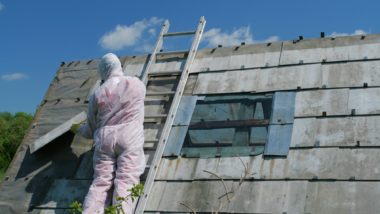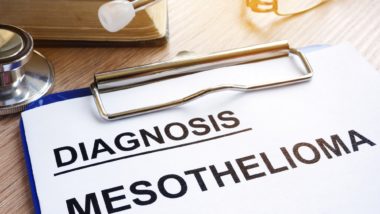Top Class Actions’s website and social media posts use affiliate links. If you make a purchase using such links, we may receive a commission, but it will not result in any additional charges to you. Please review our Affiliate Link Disclosure for more information.
Lung cancer in nonsmokers is surprisingly more common that the average U.S. citizen realizes.
The relationship between smoking tobacco products and developing lung cancer has been long established. The mere mention of a new lung cancer diagnosis is often met with questions of whether the person was a smoker or not, as if this were the only cause.
The American Cancer Society (ACS) indicates that staying clear of tobacco use is the most important preventative action an individual can take in terms of lung cancer prevention. Nevertheless, lung cancer in nonsmokers represents 20 percent of all annual deaths from the disease. As a point of reference, this figure translated to 30,000 decedents last year alone.
When addressing the issue of lung cancer in nonsmokers, it is important to differentiate between those sufferers that have never used tobacco products, or smoked fewer than 100 cigarettes over their lifetime, and those that have been smokers and quit the habit at some point. The relationship between a former smoker and lung cancer may still have quite a bit to do with tobacco, whereas one must look at other potential causes for the disease in one that never engaged the habit.
What is the Relationship of Asbestos to Lung Cancer in the Nonsmoker?

According to Very Well Health, asbestos exposure raises the risk level of developing lung cancer in the nonsmoker roughly 3.6 times over the general population. If a smoker is also exposed to asbestos, the risk level of developing lung cancer is increased 14.4 times.
Asbestos exposure is both an environmental hazard and an occupational hazard. Asbestos was once used in insulation and roofing products as well as thousands of household products. The vast majority of those that are diagnosed with mesothelioma or lung cancer from exposure has had an occupation in construction, plumbing, or mechanics.
Despite this, residents of homes built before the 1970s need to be aware that insulation in the home likely contains asbestos. Remodeling or cutting into any part of an older home might present hazards for residents if taken on without consulting a professional abatement specialist.
How Does Lung Cancer in Nonsmokers Compare to Smokers’ Lung Cancer?
Lung cancer in both smokers and nonsmokers is most often a form of non-small cell lung cancer (NSCLC). Small cell and non-small cell refers to the appearance of cancer cells when viewed under a microscope.
However, according to Yale Medicine, smokers will more frequently develop squamous cell lung cancer which forms in the bronchi – some of the larger air passages found in the central lungs. In contrast, nonsmokers are more likely to develop adenocarcinoma lung cancer which forms in the mucus cells lining the small bronchioles in the outer areas of the lungs.
“The good news is that the types of lung cancer that nonsmokers tend to get are usually driven by a molecular change or mutation that can be detected in the tumor, and there are drugs and therapeutics available for them,” Yale Medicine thoracic medical oncologist Dr. Anne Chiang says. Dr. Chiang also serves as the chief network officer and deputy chief medical officer for the Smilow Cancer Hospital.
What is the Relationship Between Other Environmental Exposures and Lung Cancer in the Nonsmoker?
In a separate Very Well Health article, we are introduced to other potential environmental causes for lung cancer development. Among those causes are air pollution, second-hand smoke exposure by living with a smoker, exposure to wood smoke from wood-burning stoves, exposure to fumes from cooking fuels such as coal—rarely an issue in the U.S., and exposure to radon.
According to the American Cancer Society, genetics may also play a role in lung cancer in nonsmokers. Individuals who inherent DNA changes from their parents may be at a risk for developing certain cancers including lung cancer. However, mutations which cause cancers may be more rare.
Unfortunately, individuals may not know they have genes which make them susceptible to cancer. Researchers continue to develop tests, though these are not routinely used by doctors. Instead, the American Cancer Society says that people can protect themselves by being proactive to avoid carcinogens.
How Can I Protect Myself?
If you are exposed to other risk factors, there are actions you can take to protect yourself and your loved ones. If you rely on a wood-burning stove for heat, consider converting your system to a less dangerous and clean-burning gas fireplace. Also, have your home tested for radon—a radioactive gas released by the breakdown of uranium in the soil.
Radon can enter the home in numerous ways such as around drains and sump pumps, window wells, cracks in foundations, and other gaps. The test for radon is easily purchased and inexpensive. Exposure to the gas is responsible for an estimated 20,000 deaths annually, according to our source.
How Serious is Lung Cancer?
Lung cancer is a very serious disease that occurs when cancerous tumors start to form in the lung tissue. According to the Mayo Clinic, a leading authority in medical care, lung cancer is the leading cancer-related cause of death in both men and women. Each year, more people reportedly die from lung cancer than from colon, prostate, ovarian, and breast cancer combined.
Part of the deadly nature of lung cancer is its lack of symptoms in its early stages. Cancer is most treatable at the earliest development of the disease but without the development of symptoms it is hard to catch.
Only in advanced stages does lung cancer result in notable symptoms. These symptoms may include persistent coughing, coughing up blood, shortness of breath, chest pain, hoarseness, unexplained weight loss, bone paid, and headaches.
Because lung cancer is a seriously deadly illness, it is important that people do their best to reduce their risk for the disease. This means avoiding known causes of lung cancer such as tobacco smoke, radon, and asbestos.
Unfortunately, older people may have been exposed to asbestos before it was strictly regulated. Although these individuals may not have known about the risks when they were exposed, they may start to see the consequences of asbestos exposure, including lung cancer.
If you came into contact with asbestos during a previous job, military service, or residence and later developed lung cancer, your illness may be the result of your past asbestos exposure. This may entitle you to compensation.
Join a Free Asbestos Cancer Class Action Lawsuit Investigation
If you or a loved one have been exposed to asbestos and were subsequently diagnosed with the following asbestos-related illnesses:
- Mesothelioma
- Lung cancer
- Larynx cancer
- Esophageal cancer
- Colon cancer
- Pulmonary asbestosis
- Asbestos-related pleural disease,
… then you may be eligible to file an asbestos lawsuit to seek compensation for your medical expenses, lost wages, pain and suffering, and other losses you have experienced.
If your loved one has passed away, you may also be able to file a wrongful death lawsuit to seek compensation for funeral expenses and other costs associated with your loved one’s illness.
Obtain a free case review now by filling out the form on this page.
An asbestos attorney will contact you if you potentially qualify to file an asbestos lawsuit or class action lawsuit. There is no cost or obligation associated with this case evaluation.
ATTORNEY ADVERTISING
Top Class Actions is a Proud Member of the American Bar Association
LEGAL INFORMATION IS NOT LEGAL ADVICE
Top Class Actions Legal Statement
©2008 – 2024 Top Class Actions® LLC
Various Trademarks held by their respective owners
This website is not intended for viewing or usage by European Union citizens.
Get Help – It’s Free
Join a Free Asbestos Cancer Class Action Lawsuit Investigation
If you qualify, an attorney will contact you to discuss the details of your potential case at no charge to you.
PLEASE NOTE: If you want to participate in this investigation, it is imperative that you reply to the law firm if they call or email you. Failing to do so may result in you not getting signed up as a client or getting you dropped as a client.
E-mail any problems with this form to:
Questions@TopClassActions.com.
Oops! We could not locate your form.












